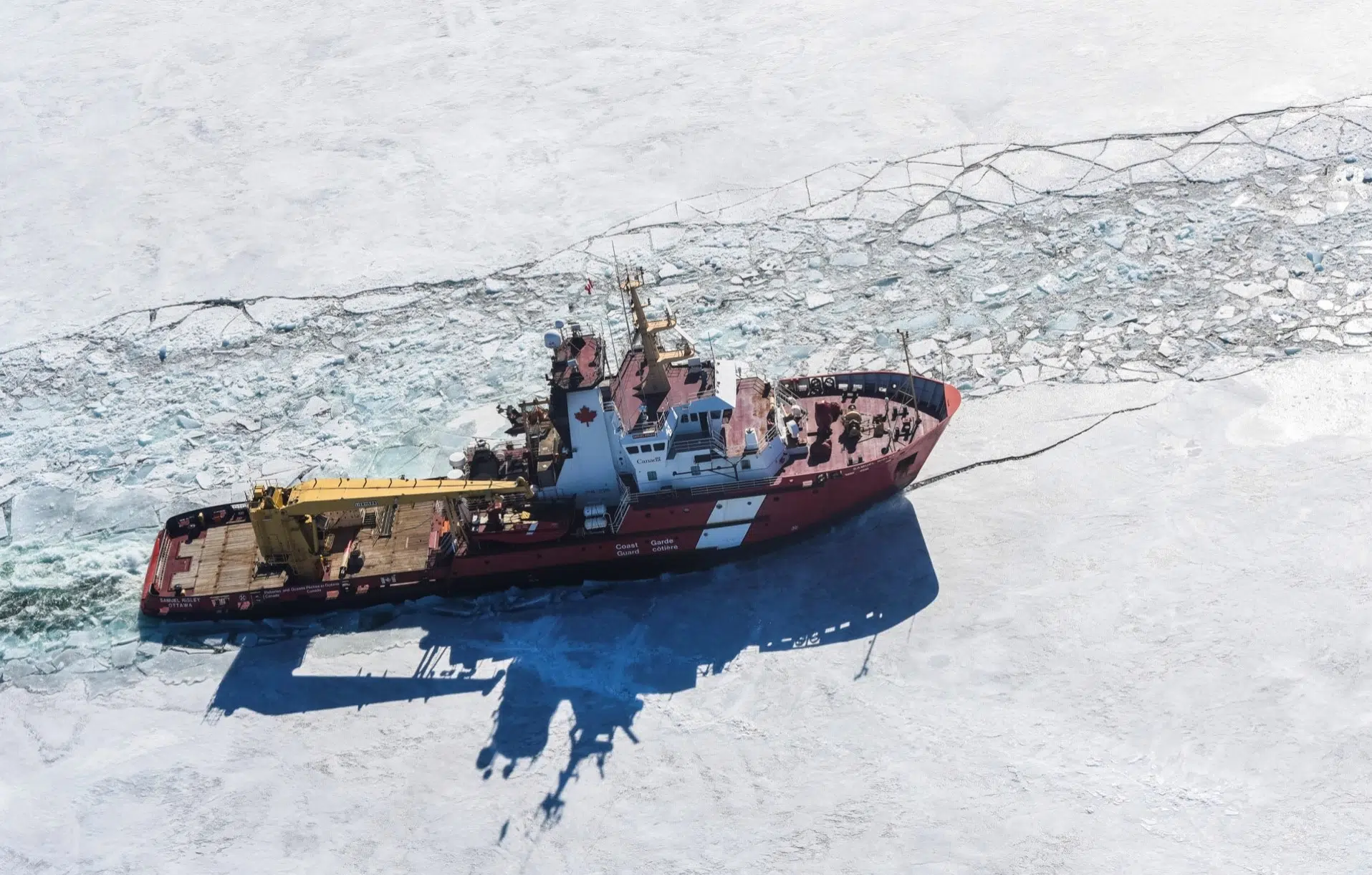
The Canadian Coast Guard will be in Thunder Bay’s harbour as they direct the Samuel Risley through the ice.
The large vessel will be making tracks, breaking up the ice that’s been built over the winter months.
Commanding Officer, Stacey Trombley, told Acadia News that right now the ice that is breaking up is about two feet thick. The only issue they are encountering is turning the boat, but that’s because of the ice and is certainly not a major concern.
The sizable icebreaker was built to navigate through the treacherous ice-covered waters of the Great Lakes. Originally commissioned in 1985 by the Canadian Coast Guard and named after Samuel Risley, who was the first superintendent of the Canadian Government Marine Service.
The Samuel Risley was built at the Port Weller Dry Docks in St. Catharines, Ontario, and was launched on July 20, 1985. It is a powerful vessel, measuring 69 meters in length and 15 meters in width, with a displacement of 2,745 tons. It has a top speed of 16 knots and can break through ice up to 2 meters thick.
The icebreaker is equipped with state-of-the-art technology, including radar and sonar systems that enable it to navigate through thick ice, even in poor visibility conditions. It is also equipped with a helicopter landing pad, which is used for search and rescue operations in the Great Lakes.
Operated by a crew of 22, including officers, engineers, and seamen; the crew is highly trained in ice navigation and survival techniques, and they work around the clock to keep the vessel operating smoothly in the harsh conditions of the Great Lakes.
In addition to its primary role as an icebreaker, the Samuel Risley also serves as a platform for scientific research. It has been used in numerous research projects, including studies of the effects of climate change on the Great Lakes ecosystem.
Samuel Risley has been involved in numerous high-profile operations throughout its career. In 1996, it was involved in the search of the ill fated freighter Edmund Fitzgerald, which sank in Lake Superior during a storm. The Risley was also involved in the cleanup of the 2010 Enbridge oil spill in the Kalamazoo River.
Overall, the Samuel Risley is an essential part of Canada’s maritime infrastructure, playing a critical role in keeping the Great Lakes shipping lanes open and safe for navigation. Its powerful engines, advanced technology, and dedicated crew make it a formidable force on the water, capable of overcoming even the toughest challenges of the Great Lakes.



